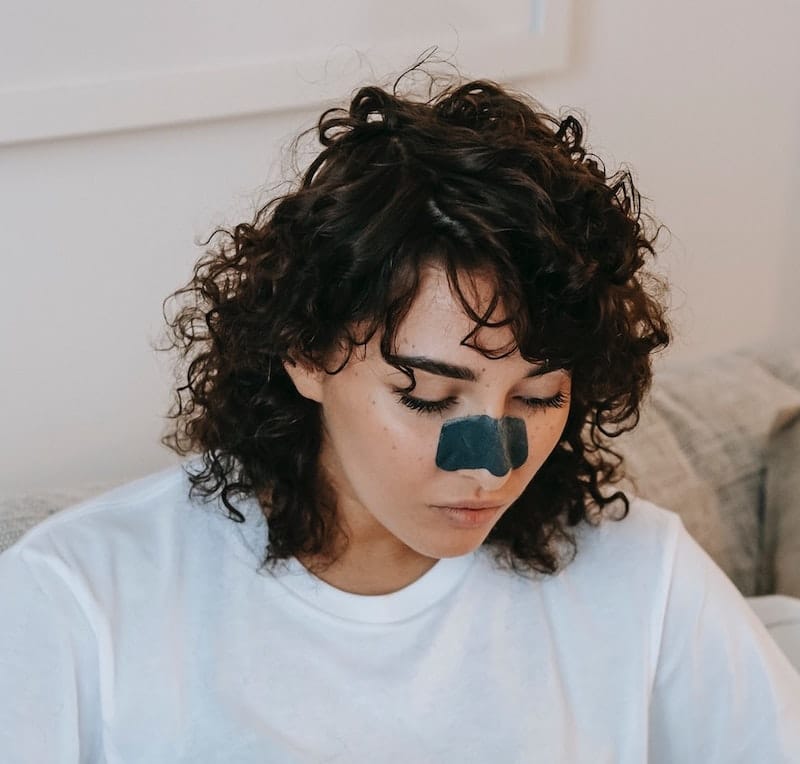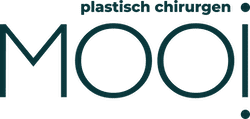Recovery and aftercare after rhinoplasty
After rhinoplasty, your skin, nose and face need time to recover. Every rhinoplasty is different: sometimes only the nasal tip is corrected and other times the entire nose is reduced in size, where the bone or cartilage in the nose is also adjusted. This is why recovering from a rhinoplasty can be a slightly different experience for everyone. We’re often asked what you can and cannot do after rhinoplasty and how to promote recovery. To get the most MOOI results, it’s important to carefully follow our instructions.
Nasal Tampons
Nasal tampons aren’t always necessary and depends on the type of rhinoplasty you’ve had. The nasal tampon absorbs any fluid and blood so when you are using one, you can only breathe through your mouth. If you need to sneeze, do so with your mouth open. Nasal tampons are removed the day after surgery at MOOI Clinic.
Nose cap / splint
Your nose will be protected and supported with a cap/ splint or band-aids after surgery. This keeps your nose in the correct position, combats swelling and ensures that everything heals properly. You’ll wear this splint for about 7 to 10 days and it will be removed during your checkup at MOOI Clinic.
After removing the splint, the nose is not yet healed. Both cartilage and bone structures have yet to take their final shape. Slight changes in the shape of the nose, both favorable and unfavorable, may still occur during the period of healing.

Painkillers and other medications
If you feel lousy or your body is very painful, you may always take paracetamol and any additional painkillers prescribed by the doctor. In consultation with the plastic surgeon you may discuss if and/or when to resume any blood thinners or other medication.
The first days after rhinoplasty
Even though the plastic surgeon walked you through the procedure beforehand, in order to obtain the most MOOI result and speed up your recovery, we recommend the following (unless expressly stated otherwise by the plastic surgeon).
Pain is virtually non-existent after rhinoplasty. However, you may experience discomfort as a result of swollen eyes, which can sometime become completely closed, and because of the nasal tampons.
DON’T: DRIVE YOURSELF HOME
One thing you should not do immediately after surgery is get behind the wheel yourself. Make sure there is someone with you who can drive you home safely. Moreover, your nose is wrapped with bandages and because of the anesthesia, you’re not fully alert. You may not drive a car for one week after surgery.
DO: REST
For the first few days after your rhinoplasty, you should take it easy. This means resting a lot and not doing (heavy) household chores such as laundry, vacuuming, etc. It’s helpful to have someone around who can help you. You may return to sports activities only after 6 weeks.
DON’T: APPLY PRESSURE
During the first week, avoid any activities that cause pressure on the surgical area – that means do not lift, press or bend. You can, however, do lighter activities, such as reading and writing. After 1 week, you can slowly resume your activities, unless indicated otherwise by your treating physician. Sports activities and heavy work can be resumed after 4 to 6 weeks, depending on the extensiveness of the surgery and how you’re healing.
DON’T: BLOW YOUR NOSE
For 2 weeks, you must not blow your nose. If you have to sneeze shortly after the procedure try to do it with your mouth open. You may use a nasal spray containing saline solution to soften the crusts in the nose.
DO: USE A COLD PACK
If the swelling is severe, it helps to use a cold pack to counteract the swelling. For the first two days, use the cold pack every hour for 5-10 minutes. After that, you can use the cold pack several times a day. It’s important to put something between a cold pack and the skin for protection.
DON’T DO IT RIGHT AWAY: SHOWERING AND BATHING
One day after surgery, you’ll be able to shower quickly again but make sure your nose doesn’t get wet. Avoid hot steam/ fumes for the first few showers. Be careful not to dry around the scars by rubbing and avoid getting the plasters wet.
DON’T: SMOKING
Definitely don’t! Smoking adversely affects blood flow to the tissues, which is precisely what is important for proper recovery. We therefore recommend that you stop smoking at least 6 weeks before and after treatment. It is also better not to smoke after treatment. This accelerates the aging process and increases the risk of complications.
Don’t drink alcohol for the first week after surgery because of the risk of post-treatment bleeding.
DON’T: SLEEP ON YOUR STOMACH OR SIDE
We recommend sleeping in a semi-seated position to reduce swelling. At least for one week, don’t sleep on your side or stomach as this can cause slight misalignment of the nose.
DON’T: WEAR MAKEUP AND EYE GLASSES
For the first few days, your face will look blue and bruised. But after one to two weeks, this will slowly subside. Unfortunately, you shouldn’t use makeup around the surgery area for the first three weeks after surgery. Also, you shouldn’t wear any type of eye glasses for the first six weeks after surgery.
One week after your rhinoplasty
After a week (or 10 days) you’ll come back for a check-up at MOOI Clinic. The nose cap and any sutures are removed. Swelling may be present for some time after the splint is removed, especially on the inner sides of the eyes. At first, the nose feels hard and stiff, and you’ll notice that sensation is reduced or absent. Swelling can last the longest at the nasal tip. All these discomforts gradually disappear over time.
After 1 week you’re allowed to do a little more again, but by no means everything! Always consult with the plastic surgeon.
YOU MAY DO THIS AGAIN:
- Driving
- Depending on your occupation, you may start working again (not intensively)
- Walking and gentle movements
- If your recovery goes well, you’ll be allowed to fly again after 2 weeks. Consult with the physician beforehand.
- Sleep however you want
YOU MAY NOT DO THIS YET:
- Wear makeup (only after 3 weeks)
- Put too much tension on your face (do not press, push, lift or bend)
- Sports, including swimming
- Face steaming
- Heavy lifting or physically strenuous work
- Tanning, sauna or tanning bed
Six weeks after your rhinoplasty
After six weeks, you’re usually well recovered from the surgery. It’s difficult to say when the face will go back to normal again. This varies from person to person and depends on the amount of wound fluid or bruising under the skin. But, on average, it takes about 6 weeks. In some cases, the nose appears normal again much sooner, however for other it may take a little longer.
Most people can completely return to their normal activities after 6 weeks – just be careful with contact sports. It’s better to put that off until a year after surgery. If swelling is still present, it’s also better to postpone using a sauna or taking a hot bath until after the final checkup.
Final check-up and result
After about 3 months, you’ll come for a final check-up at MOOI Clinic. The periods of recovery mentioned are averages and can vary greatly from person to person. Scars begin to turn from pink to purple sometime between 6 and 12 months, eventually turning pale and becoming almost invisible.
In some cases, small irregularities can be felt when touching the bridge of the nose – this is a normal. Only if these irregularities are also evident may a second, minor correction be necessary.
Do you have any doubts about your situation, as to whether or not you should be allowed to do something? Then contact us!



